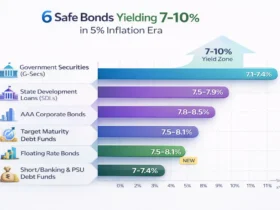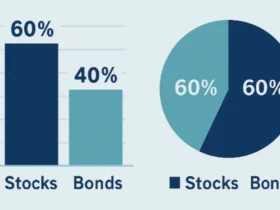Introduction: A Crash That Shocked the Crypto World
The cryptocurrency market, often celebrated for its explosive growth, recently faced one of its most dramatic sell-offs of 2025. In just 24 hours, nearly 407,000 traders were liquidated, leading to a combined loss of $1.7 billion. This crash, primarily driven by overleveraged long positions, hit Bitcoin, Ethereum, and several altcoins, leaving the entire crypto market shaken.
Table of Contents
Table 1: Snapshot of the Crash
| Metric | Value |
|---|---|
| Traders Liquidated | ~407,000 |
| Total Loss | ~$1.7 Billion |
| Primary Affected Assets | Bitcoin, Ethereum, Altcoins |
| Liquidation Type | Mostly Long Positions |
| Timeframe | 24 Hours |
What Triggered the Liquidations?
The sudden crash wasn’t due to a single factor. Analysts point to overleveraged trading, macroeconomic uncertainty, and weakening market sentiment as the main causes. Bitcoin broke below a critical support zone, triggering a chain reaction of stop-losses and liquidation events across exchanges. As liquidity dried up, altcoins experienced double-digit drops, amplifying the chaos.
Table 2: Price Movements During the Crash
| Asset | Price Before Crash | Lowest Price (24h) | % Drop |
|---|---|---|---|
| Bitcoin (BTC) | $116,000 | $112,000 | -3.5% |
| Ethereum (ETH) | $4,500 | $4,050 | -10% |
| Dogecoin (DOGE) | $0.21 | $0.18 | -14% |
| Total Market Cap | $4.05T | $3.95T | -2.5% |
Who Lost the Most?
The crash disproportionately affected retail traders who had taken highly leveraged positions. Exchanges such as Binance, OKX, and Bybit reported record-high liquidations. Institutional investors, who typically hold spot positions without high leverage, faced smaller paper losses but avoided mass liquidations.
Table 3: Trader Impact Analysis
| Trader Category | Exposure | Liquidation Risk |
|---|---|---|
| Retail (Leverage x10–x100) | Very High | Severe |
| Mid-level traders (Leverage x2–x5) | Moderate | High |
| Institutional Investors (Spot) | Low | Minimal |
Short-Term Impact on the Market
The immediate aftermath saw panic selling, especially in altcoins. Bitcoin dominance briefly rose as traders fled to safety, while meme coins and small-cap tokens dropped heavily. Stablecoins like USDT and USDC remained steady, showing investors’ preference for dollar-pegged stability during volatility.
Also Read: How We 10X’d Our Crypto Portfolio: A Case Stud
Table 4: Altcoin & Stablecoin Performance
| Asset Category | Avg. Price Drop | Investor Trend |
|---|---|---|
| Major Altcoins | -5% to -12% | Panic Selling |
| Meme Coins | -15% to -30% | Sharp Sell-off |
| Stablecoins | 0% | Safe Haven Demand |
The Bigger Picture: Cyclical or Structural?
Crypto has always been volatile, but such mass liquidations highlight systemic fragility. Leverage remains both a tool for profits and a recipe for disaster. Analysts believe this event could force exchanges to tighten margin rules, while regulators may accelerate discussions around consumer protection in digital assets.
Table 5: Systemic Weaknesses Exposed
| Weakness | Impact |
|---|---|
| Excessive Leverage | Cascade of liquidations |
| Poor Risk Management | Retail losses balloon |
| Thin Liquidity in Altcoins | Amplified price swings |
| Lack of Investor Education | Panic-driven exits |
Futuristic Projections: Where Do We Go From Here?
Despite the crash, experts remain cautiously optimistic. Historical cycles show that liquidation-driven crashes often precede recoveries. Analysts forecast Bitcoin could reach $120K–$150K by late 2025 under favorable conditions, while Ethereum might trade in the $4.5K–$7K range. By 2026–2027, growing institutional adoption and regulatory clarity may push the market cap toward $6 trillion.
Table 6: Market Forecasts (2025–2027)
| Year | Bitcoin Projection | Ethereum Projection | Total Market Cap Projection |
|---|---|---|---|
| End of 2025 | $120K – $150K | $4.5K – $7K | $4.5T – $6T |
| End of 2026 | $150K – $200K | $6K – $10K | $5T – $7T |
| End of 2027 | $200K – $250K | $8K – $12K | $6T – $8T |
Key Lessons for Investors
- Avoid excessive leverage – small dips can wipe out entire portfolios.
- Diversify holdings – spread investments across BTC, ETH, and stablecoins.
- Risk management is crucial – use stop-losses wisely.
- Think long-term – crypto markets often rebound after major corrections.
Table 7: Risk vs Reward Summary
| Strategy | Reward Potential | Risk Level |
|---|---|---|
| High Leverage (x50+) | Very High | Extreme |
| Spot Investing | Moderate | Low |
| Diversified Portfolio | High | Balanced |
| Long-Term Holding | Very High | Medium |
Conclusion
The $1.7 billion liquidation and 407,000 traders wiped out is a stark reminder of crypto’s volatility. While the crash has caused short-term pain, history shows that such events often pave the way for healthier, more sustainable growth. Whether you’re a retail trader or a long-term investor, the key lies in risk management, diversification, and patience.
The crypto market of 2025 is still in its formative years. With institutional adoption growing and clearer regulations on the horizon, the next bull run could be larger than ever. For now, investors must tread carefully — balancing opportunity with caution.
FAQs
Q1. What caused the $1.7B crypto liquidation?
A combination of overleveraged positions, Bitcoin breaching support, and cascading stop-loss triggers.
Q2. How many traders were affected in the crash?
Roughly 407,000 traders saw their positions wiped out in 24 hours.
Q3. What is the current Bitcoin price ?
Bitcoin trades around $112,000–$114,000.
Q4. Will Bitcoin recover after this crash?
Analysts forecast BTC could still hit $120K–$150K by year-end 2025, depending on institutional inflows.
Q5. How can retail traders protect themselves?
By limiting leverage, diversifying assets, and focusing on long-term investment strategies.




























Leave a Reply